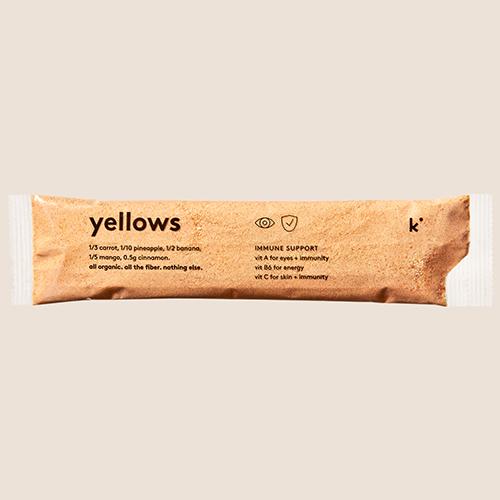What are prebiotics?
When it comes to “biotics,” in the world of nutrition it seems like probiotics tend to hog the spotlight. But we’re here to hype up one of the unsung heroes of digestion, and more!
When we sit down to enjoy a meal, even if it’s a solo sandwich at the desk during a working lunch, we are doing so with a bit of unexpected company: the trillions of microbes that live inside of us. And that means that the food that we ingest can in turn become food for the beneficial microbiota that calls our gut home.
And while we may crave a slice of pizza, when we get down to it, our gut biome really prefers foods rich in prebiotic fiber – the indigestible fiber found in plant food that our bodies can’t break down but bifidobacteria and lactobacilli (friendly resident bacteria in our gut) can.
What does prebiotic fiber do for us?
When microbes digest prebiotics they are able to produce byproducts that result in various health benefits. These benefits include but are not limited to:
Improved digestion
Improved mineral absorption
Supporting immune health
Supporting metabolic health
Positively impacting composition and activity of gut microbiota
Is all fiber prebiotic?
No! Fiber is a type of carbohydrate found in plant-based foods. And all dietary fiber falls into two high-level categories: soluble and insoluble. Insoluble fiber is basically roughage – plant foods that pass all the way through us, adding bulk to stool.
Meanwhile, our bodies process soluble fibers from plant foods into a sort of gel, slowing down digestion and allowing our bodies to absorb more nutrients from the foods we eat. Some soluble fibers sub-classify as prebiotic.
Are there different types of prebiotic fiber?
Excellent question, we’re presuming you’re asking! There are varying types! Three commonly studied prebiotic fibers are fructooligosaccharides (FOS), galactooligosaccharides (GOS), and inulin – we understand their benefits well.
While all prebiotics are all non-digestible fibers that promote gut health, they do have varying structures and properties that can influence their effects on the gut microbiota and the health benefit that is produced further down the line.
The three types mentioned above have been found to be beneficial for metabolic health and have a positive impact on gut microbiota. But they’ve also been found to possess unique benefits. For example, FOS and inulin have been shown to improve mineral absorption and positively impact bone health while only GOS has been shown to positively impact IBS symptoms.
How much prebiotic fiber do we need? (plus a plug for our gumdrops!)
If you’re reading this and are concerned over a “new” nutrient you’ve now got to worry about, don’t sweat it. Chances are, you don’t need to overhaul your diet or daily routine. Common sources of prebiotics include commonly-consumed foods like:
Garlic
Onion
Bananas
Apples
Oats
Chicory root
And the benefits of prebiotics are associated with just 3-5 grams of the stuff per day. If you’d like to bolster your prebiotic intake in a fun and convenient way, might we suggest giving our tasty gumdrops a try? Each pack contains 2-3 grams of prebiotics!
there's more good content where that came from
